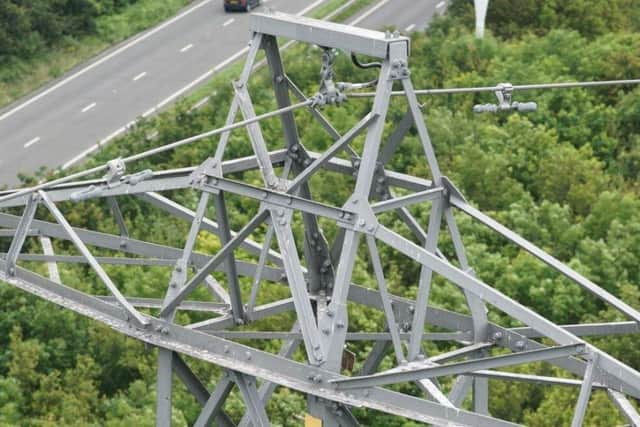SSEN £600,000 upgrade boosts Hunston electricity network


The £600,000 programme of works started in August 2020, with the extensive replacement of over 8.6 kilometres of the area’s overhead electricity infrastructure. In addition to the existing overhead cable components being upgraded with modern, efficient equipment, 35 of the towers supporting the overhead cables were refurbished; providing stability and security to the local network for the changing needs of over 3,650 homes and businesses in the area.
Running over the course of 16 months, the project carefully worked between the two substations located in Lovedean and Hunston, bringing a more resilient and flexible network to the villages as those living and working there move to meet their net zero ambitions and adopt low carbon technologies, such as electric vehicles and heat pumps.
Advertisement
Hide AdAdvertisement
Hide AdSSEN’s Project Manager, Martin Bailey said: “My team and I would like to thank our customers for their patience while we carried out these substantial works on the overhead network powering their homes and businesses.
“We are delighted to have completed this project ahead of the winter months. By upgrading both the overhead cables and the supporting towers, SSEN has boosted the resilience of the infrastructure for thousands of local residents and business owners, and significantly reduced the risk of power cuts in the face of adverse weather.
“Additionally, this project provides the villages of Lovedean and Hunston with greater flexibility as more of our customers across West Sussex look to achieve their net zero goals.”
With a population of over a quarter of a million across the wider district of West Sussex – which includes areas such Arundel, Bognor Regis, Chichester and Horsham - the locale is forecast to have as many as 2,564 electric vehicle (EV) chargepoints by the end of 2021, with that figure rising to 42,993 in 2030 and reaching 77,5373 by 2050.
Additionally, heat pumps installed across West Sussex are forecast to rise from 3,355 in 2021 to 93,297 by 2050.